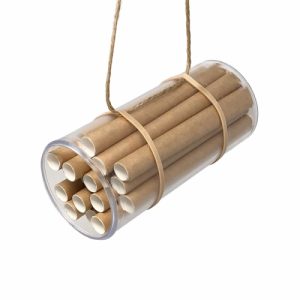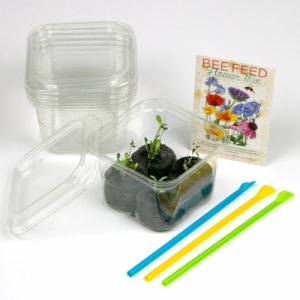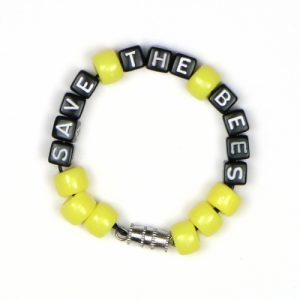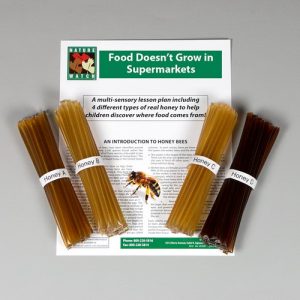There is more to explore about the world’s precious pollinators!
Pollinator education is our passion! We would love for you to help us raise awareness about the plight of pollinators. We offer numerous free resources for all ages. Enjoy and share these pollinator-themed books, lesson plans, and virtual field trips to help us inspire young environmentalists!
Activity 1. Add a Native Bee House to your backyard
Mason bees are excellent pollinators and encompass 139 species across North America. They are known for building their nests in unique places. Mason bees are solitary and thus do not swarm. Mason bees like to nest in holes, they find hollow stems or holes in pieces of dead wood to build them. Since all they need is a safe place to live, we can build homes for Mason bees and help their population grow.
- There are 139 species of mason bees that are native to North America! To find out more watch Mason Bees are a Gardener’s Best Friend.
- Did you know that there are more than 4,000 species of native bees in North America? Take a peek at some of these vital and unique pollinators – Native Bee Diversity in North America.

Activity 2. Plant a Wildflower Bee Garden
Bees use nectar and pollen from flowers as a food and energy source. Depending on your area there may be an abundance of wildflowers, landscape flowers, crops or trees, and shrubs. Bees will fly about 3 miles from their hive to find their nectar and pollen source. The Garden you plant will become a wonderful place for bees to visit all Spring and Summer!
- Use the following Ecoregional Guide for a list of native, seasonal plants for your area. Local plant nurseries can help you pick out just the right plant no matter what time of year.
- Learn more about turning your yard into a wildflower garden for pollinators! Watch Planting Wildflower Seeds to learn more.

Activity 3. Wear a Save the Bees Bracelet
When you make and wear your own Save the Bees bracelet, you raise awareness of busy pollinators! Bee a voice for taking action! Wear it proudly, and be ready to answer questions about the meaning of your bracelet. After completing this project you will have all the tools you need to bee a friend to pollinators.
- As part of spreading awareness for the plight of pollinators, download your Adopt-a-Bee Certificate, name your bee and share with a friend.
- Learn more about the Critical Importance of Pollinators from the experts as well as what you can do to help!

Activity 4. Honey Tasting Experience
Did you know that the flavor of honey changes based on the season and the region in which it is produced? The flavor of honey is based on the floral variety near the hive. You can support bee populations by buying local honey. It is more vital than ever to support local bee farmers who are helping raise and maintain healthy bees. The percentage of fructose, glucose, amount and type of amino acids, and organic acids can also affect the flavor of honey.
- Honey Wheel – Honey I Hardly Know You! Article Link
- Learn how to appreciate the different flavors, colors, and textures of honey with Taste This: The Connoisseurs Guide to Tasting Honey with Amina Harris @ UC Davis – Video Link
- UC Davis Honey Wheel Link for Purchase


